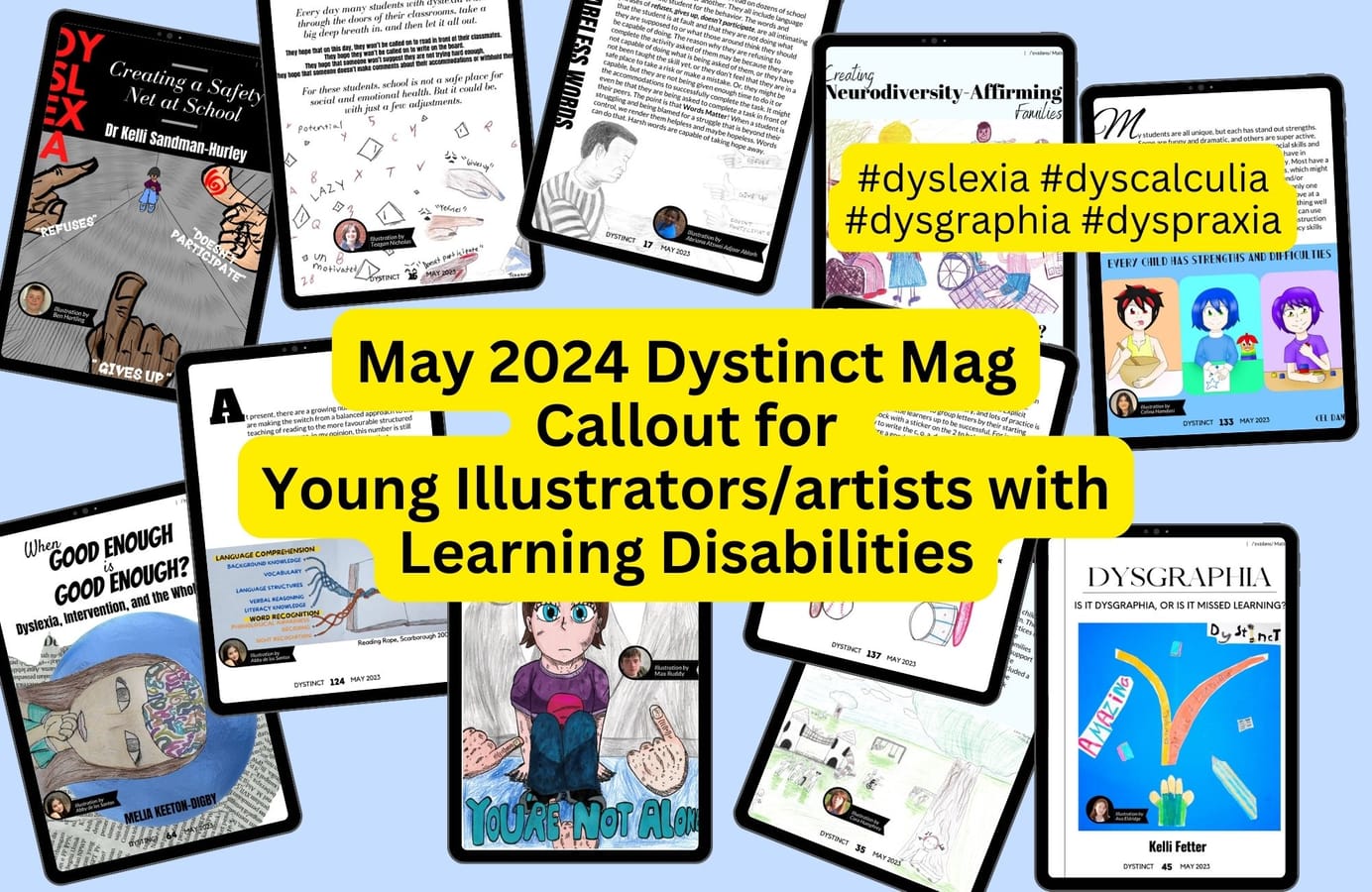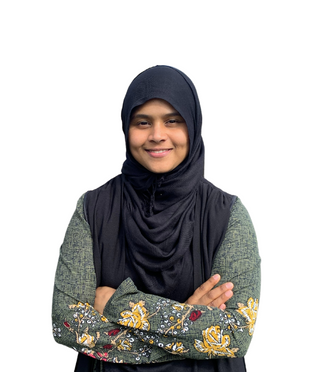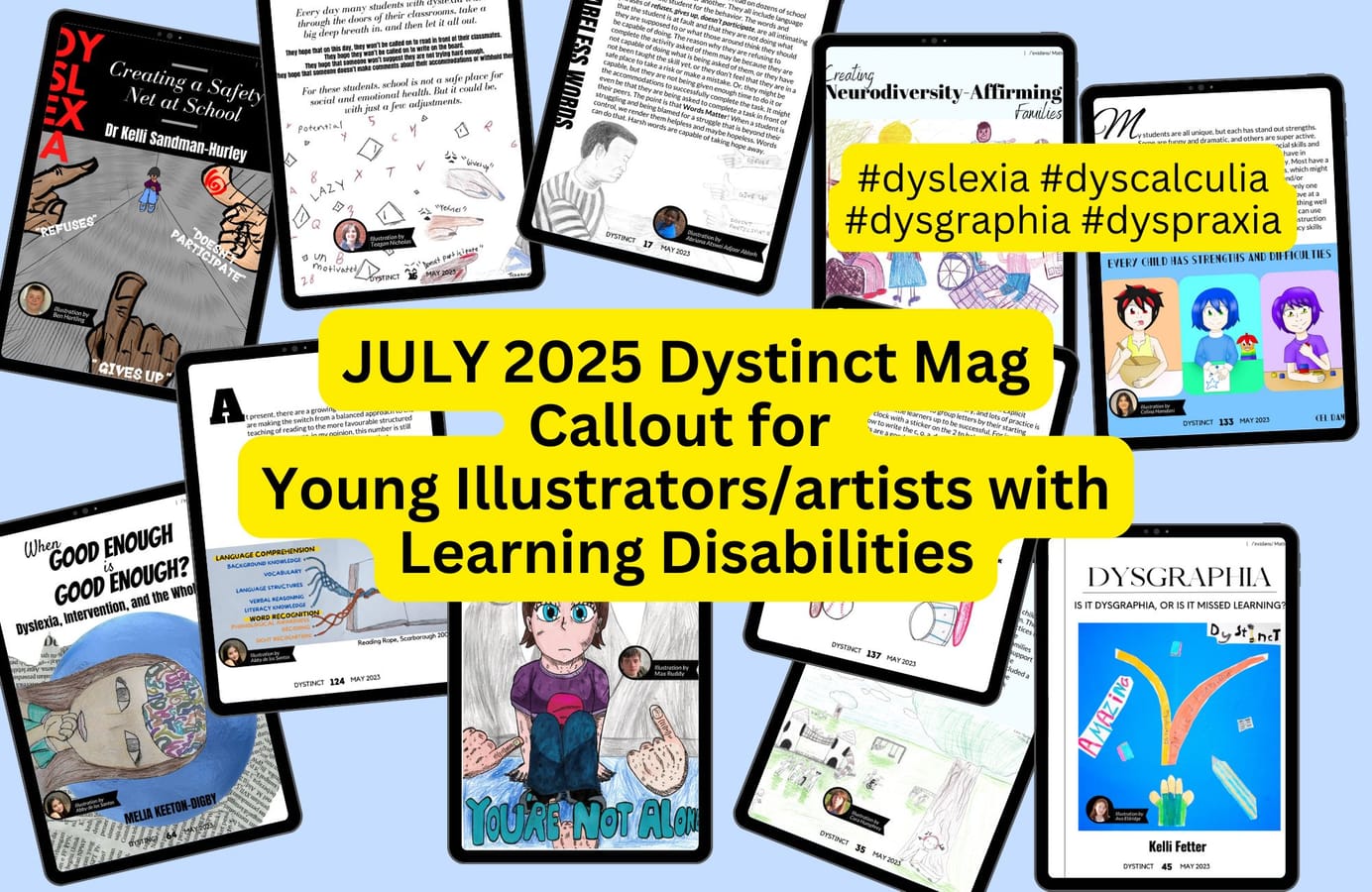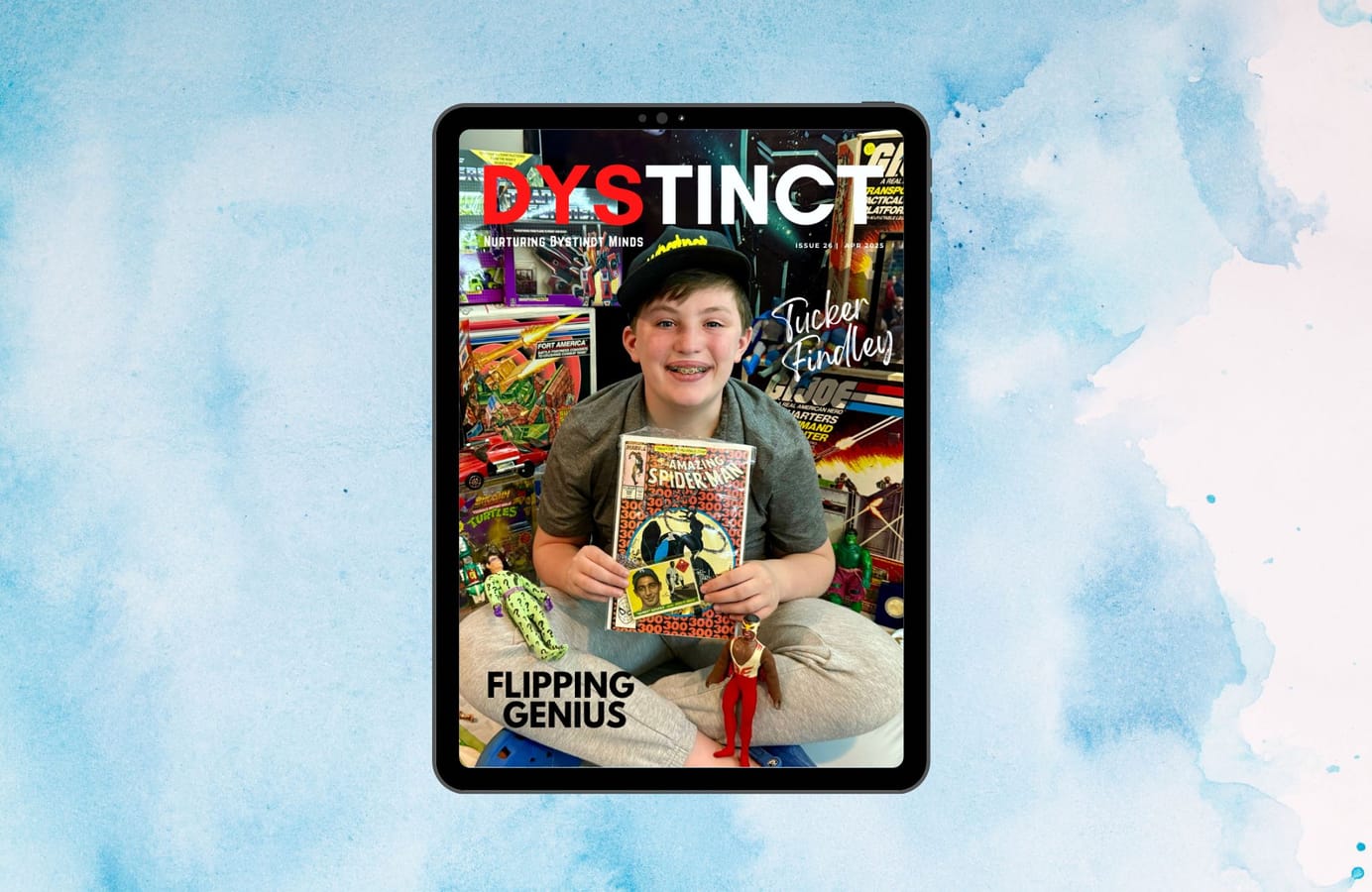
Issue 21: Illustration Callout for May 2024 Dystinct Magazine
Opportunity for children to get their illustrations published in the Dystinct Magazine. In every magazine issue, articles written by specialists are accompanied by illustrations created by children. Submit your child's illustrations for a chance to be featured in the Dystinct Magazine.
Table of Contents
Callouts for illustrations to be featured in the upcoming May 2024 issue of the Dystinct Magazine
Instructions to submit the illustrations are at the bottom. If you have any questions, please get in touch with me at hello@dystinct.org.
Callout 1 - Transition to Secondary School/ High school
- Article Topic: Transitioning to Secondary School
- Article Context: This article delves into the complexities of transitioning from primary to secondary school, providing insights, addressing common concerns, and advocating for a collaborative approach to support students' success.
Illustration Guideline:
Children can feel free to create an illustration as per their creativity.
If you require ideas children can create an illustration to the theme of one of the options below:
- Emotional rollercoaster: An illustration showing a rollercoaster going from a smaller building marked as primary school to a bigger building marked as secondary school with various emotions like excitement, nervousness, and anticipation along the track, symbolizing the ups and downs of transitioning to secondary school.
- Before and After: Two contrasting scenes depicting a child feeling uncertain and overwhelmed walking out the gates of primary school and then a confident-looking and settled child walking into the gates of secondary school, showcasing the transformation through the transition process.
- Support Network: A drawing of teachers, parents, and other professionals surrounding a student and offering guidance and assistance during the transition.
Callout 2 - Bilingualism and Dyslexia
- Article Topic: Bilingualism and Dyslexia: Understanding the Impact and Opportunities.
- Article Context: This article delves into the interconnected advantages of bilingualism and dyslexia. She emphasizes structured literacy as a crucial tool for unlocking potential and fostering biliteracy in dyslexic children.
Illustration Guideline:
Children can feel free to create an illustration as per their creativity.
If you require ideas children can create an illustration to the theme of one of the options below:
- Magic Book: Draw a magical book with pages filled with diverse languages and symbols, illustrating how structured literacy unlocks the magic of reading for dyslexic bilingual children.
- Language Rainbow: Create a rainbow with the colours representing different languages, showing how bilingualism adds richness and diversity to a dyslexic child's language skills.
- Bilingual Library: Illustrate a library filled with books in different languages, with dyslexic children happily exploring the shelves, highlighting the joy of reading that can be facilitated by structured literacy support.
Callout 3 - The role of Complex Trauma on behaviour and learning
- Article Topic: Complex Trauma – A Learning Disability Often Misunderstood
- Article Context: The author, drawing from her experience as a teacher and in child protection, highlights the misunderstood impact of complex trauma on children's behaviour and learning, advocating for trauma-informed practices in education to better support affected students.
Illustration Guideline:
Children can feel free to create an illustration as per their creativity.
If you require ideas children can create an illustration to the theme of one of the options below:
- Safe Space: An illustration of a safe and calming place in a classroom setting, such as a quiet corner with books, pillows, or art supplies where an overwhelmed child is sitting to regulate their emotions.
- Positive Adult Relationship: An illustration featuring a teacher and a student standing together, surrounded by a big heart or rainbow in the background. This heart or rainbow can be filled with words like "trustworthy," "caring," and "supportive," symbolizing the qualities of a healthy adult relationship and highlighting the crucial role of supportive teachers in students' lives.
Callout 4 - Examining Structured literacy, Emotional well-being, and Assistive technology as crucial elements for the success of dyslexic individuals
- Article Topic: Essential Elements to Supporting Dyslexic Success: Structured Literacy, Emotional Well-being, and Assistive Technology
- Article Context: The authors, researchers in the field of reading and dyslexia who are themselves dyslexic, draw from their personal experiences and research expertise to advocate for structured literacy, emotional well-being, and assistive technology as crucial elements for the success of dyslexic individuals.
Illustration Guideline:
Children can feel free to create an illustration as per their creativity.
If you require a guideline, children can create an illustration of a tree, which metaphorically represents Structured Literacy, Emotional Well-being and Assistive Technology as keys to the success of dyslexic students. The tree has three parts:
- Root: The roots of the tree represent the foundational skills of structured literacy. Each root could be labelled with key elements of structured literacy, like phonics, morphology, syntax, etc.
- Trunk and branches: The trunk and branches of the tree depict emotional support and growth. Positive affirmations and encouraging words are written along the branches, representing the nurturing environment that fosters emotional well-being.
- Leaves: The leaves of the tree are symbolic of assistive technology. The leaves could be shaped like headphones, reading pens, digital screens displaying text-to-speech tools/icons, etc.
Callout 5 - Fun, play, and laughter are essential in navigating the demands of parenting neurodivergent children
- Article Topic: Laugh, Play and Thrive - Engaging and Guiding Neurodiverse Children through Fun and Play.
- Article Context: The article explores the transformative power of fun, play, and laughter in nurturing neurodiverse children's curiosity, resilience, and emotional well-being, offering practical strategies and insights for joyful parenting and family connections.
Illustration Guideline:
Children can feel free to create an illustration as per their creativity.
If you require a guideline, children can create an illustration of a memorable, fun moment they've shared with their family, showcasing the importance of bonding through playful interactions. This could be a scene of playing together, laughing, or enjoying a silly tradition.
INSTRUCTIONS
Instructions for creating illustrations:
- If your child can create digital drawings, that would be preferred. If not, illustrations on paper will suffice. (If your child can create a digital illustration please let me know about the software/platform that they will be using to create the file).
- Please create/draw/colour on an A4 sheet of WHITE paper.
- Scan the image and send us a clear image of the illustration without shadows. Please do not take a photograph using flash on your mobile device.
Instructions for submitting your illustrations:
Please email me your submissions to hello@dystinct.org with the following info:
- Short bio- 25-50 words
- Name of Child
- Age
- Location (City/Country)
- Diagnosis/suspected diagnosis
- 1-2 high-resolution headshots/ photos of the child
Illustrations featured in previous issue of Dystinct Magazine
The below illustrations were featured in January 2024 Dystinct Magazine.







